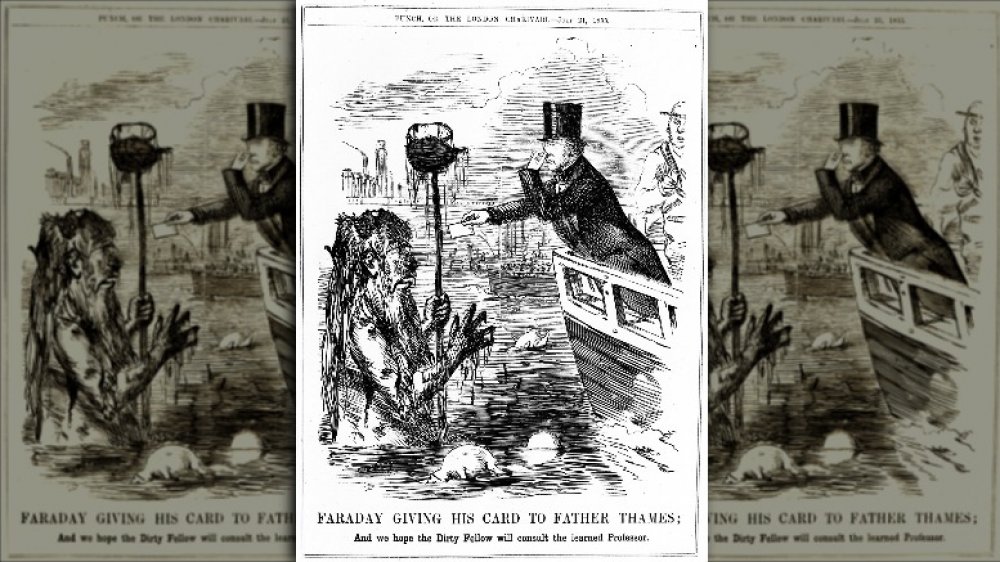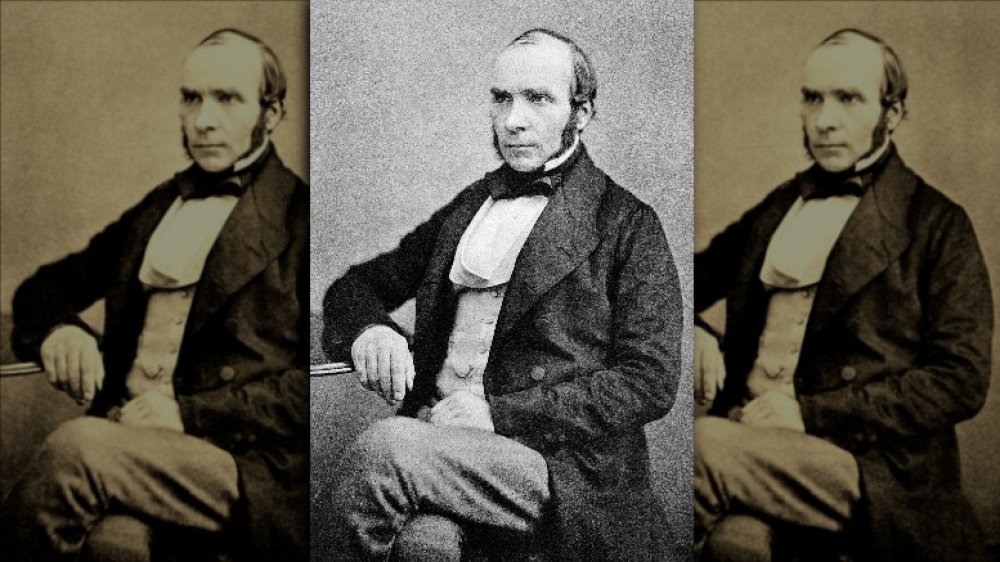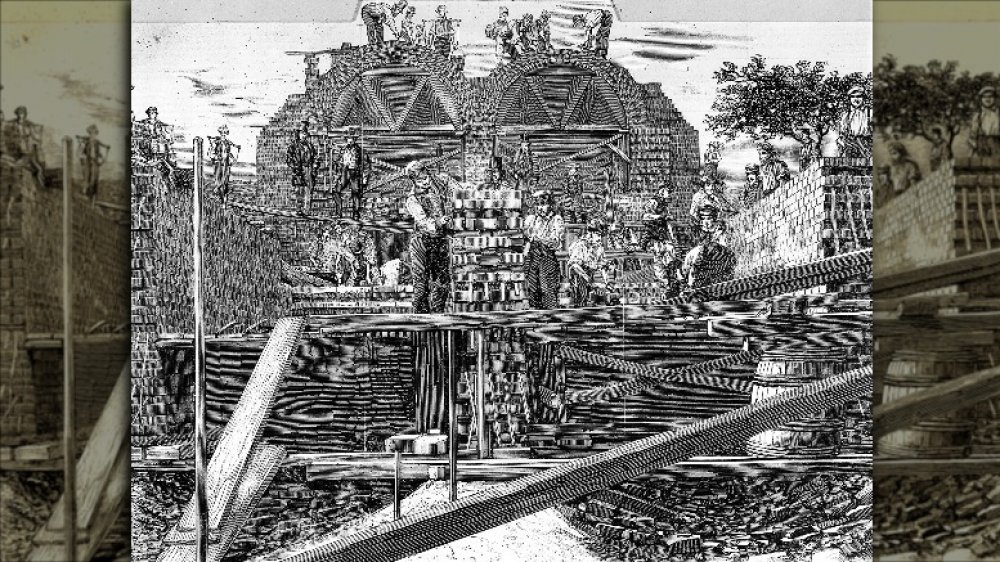The Messed Up History Of Cholera
Do you know what sucks? When a new disease arises seemingly out of nowhere, sweeps the globe, sickens thousands, kills a substantial portion of the population, and refuses to come under orderly control.
Hygiene, prevention practices, and solid public health policy can get it contained, but every so often, you still see flare-ups. Thankfully, modern medicine is pretty dang awesome at what it does, and we have amazing vaccines and treatments for many diseases that were once guaranteed lethal.
One disease that proves the value of the not-so-little things like washing your hands, social distancing, and solid personal hygiene — as well as huge stuff like smart public health policies and adapting practices as new research emerges — is cholera.
Once the scourge of the world, killing off entire neighborhoods within days of an outbreak starting, cholera is now very treatable when caught early and can often be prevented entirely with something as simple as ensuring a clean water supply. This is the messed up history of cholera.
What is cholera?
Cholera is an acute bacterial infection that causes severe diarrhea, vomiting, and leg cramps, as the CDC lays out. Cholera is caused by the Vibrio cholerae bacterium, which gets into your gut through contaminated food or water, according to the World Health Organization (WHO). Although the CDC notes that many people who get cholera won't show any symptoms, or might think they just have mild food poisoning, it can be an extremely serious illness.
That's because up to 1 in 10 people who get cholera get the severe form. If it's not treated, it can cause death in days, sometimes even hours, from severe dehydration. Basically, you can't hold on to any of your bodily fluids, then literally shrivel up and die. Fun, right?
Oh, and cholera latches on super-quick, too. According to an article in the Journal of Infectious Disease, in the most extreme cases, it takes as little as a few hours to go from your first contact with the bacteria to death. Most people will show symptoms within 2 to 3 days — assuming you show symptoms at all.
Cholera is so dangerous in part because you can easily be an asymptomatic transmitter — almost 75% of people are. That means you pick up the bug, show no symptoms or only a little mild diarrhea, and proceed to infect the heck out of everyone around you with that discharge, as the WHO notes. From there, we're in Outbreak City: Population Rapidly Declining.
Even cholera's name is shrouded in mystery
Cholera is such a weird disease that scholars can't even agree on where its name came from. It definitely comes from Greek, but might have originated as anything from "bile" to "the intestines" to "a gutter," according to a definitive book on cholera research, Cholera, edited by Dhiman Barua and William B. Greenough III. It probably doesn't have all that much to do with the historical concept of the "choleric humour" in ancient medicine, apart from a link to digestion.
Regardless, as an article in the Journal of Emerging Infectious Diseases points out, all of the disease's possible roots have to do with really unpleasant bodily functions of an explosively uncontrollable nature. I mean, gutter? It's not exactly an appealing comparison for your intestines.
The earliest cases may have been recorded in India as far back as the 5th century BCE, in the writings of ancient doctor Sushruta, the Sushruta Samhita. There may also be references in the work of Greek physician Hippocrates around the same time. The Annals of Cholera was already tracing arguments about when and where the disease first emerged in 1872, but most scholars today agree it first started sickening people somewhere in India.
By the 1500s, there were reports of a disease with clearly cholera-like symptoms in India, as Cholera notes. And the first modern outbreak was recorded in Jessore, India, in 1817.
Cholera has some horrifying symptoms
Although many people who contract cholera won't have any symptoms more severe than a little more bathroom time than usual, about 10% of patients have some seriously horrifying symptoms, as Cholera and the Thames helpfully highlights. From blue-grey skin and sunken eyes that make you look like a zombie to "rice water" emissions from pretty much everywhere you can spew liquid, it's bad. Really bad.
The low blood pressure, irritability, and sagging skin that the CDC notes as additional symptoms aren't as bad as the key traits of cholera: the vomiting and diarrhea.
Basically, if you're unfortunate enough to develop severe cholera, you can expect to spew all your insides out within the course of just a few hours. As the Science Museum of London notes, the rapid onset and incredibly scary, visible symptoms made cholera an absolutely terrifying disease for anyone who witnessed it.
And from that first big outbreak in 1817 in India, where British colonizers first encountered the disease, it would merrily march across the world to horrify and kill thousands, often leaving communities struggling to find enough living, healthy people to bury the dead, as a 1947 article in the Proceedings of the Royal Society of Medicine notes.
Cholera spread really quickly across the globe
From the first recorded outbreak in India in 1817, it took less than six years for cholera to spread rapidly. It hopped to other parts of Southeast Asia, then China, then up to Russia, as History.com notes. The second outbreak came to Europe in 1829. It made it to Canada and the United States by 1832, then down to Latin America. By 1852, cholera was present and killing people on every continent except Antarctica.
Its rapid transmission was helped along by new, fast shipping routes and global trade. We were moving people and stuff all over the world like never before, as History.com relates. Better still, the disease seemed to strengthen as it spread, becoming more efficient and deadly with every stop along the way, as noted in the Journal of Emerging Infectious Disease.
By the time cholera hit the shores of the United Kingdom in 1831, it was almost invariably deadly, ripping through populations and leaving a trail of bodies in its wake, as a Society of Royal Medicine article from 1947 relates. Often called "Asiatic cholera," theoretically to tell it apart from a milder intestinal complaint called "cholera nostras," or our intestinal disease, as the Royal Society of Medicine notes, it fast became the most terrifying disease of the day.
There were lots of cholera conspiracy theories
That "Asiatic cholera" name was really a racist thing. Word got around that cholera first emerged in India and Europeans blamed outsiders for their woes. As one source points out, some outrageously believed that Indians worshipped the disease as a god and blamed Bengali locals for purposefully spreading it.
Other crazy conspiracy theories abounded, too. Like the idea you wouldn't die from cholera at home, only if you went to the hospital — because the doctors would kill you to get a corpse for dissection, then blame it on the disease. This idea of "burking" healthy people had some basis in fact — only a few years before the first British outbreak, the infamous Burke and Hare were murdering people to supply bodies for dissection, as The Tribune notes.
Public health officials didn't help their own cause. They whisked away anyone showing symptoms, trying to quarantine and treat them. But they often took folks who hadn't shown any signs worse than tummy trouble, and because cholera develops so rapidly, those folks could go from "hello toilet" to "dead as a doornail" in hours. To the uninformed, it seemed like they were being disappeared.
People were so scared that they rioted. More than 20,000 people destroyed the anatomical college of Aberdeen, Scotland, to the ground on December 26, 1831, furious over the cholera outbreak and what they saw as the systematic murder of the city's population, according to The Tribune.
Crazy ways to prevent getting cholera
The Victorians were understandably paranoid about getting cholera. After all, if you contracted it, you were probably gonna die in just a few days.
But hey, there were ways to avoid getting cholera! The most important one was: don't be poor. As the Royal Society of Medicine notes, cholera was first thought to be a disease strictly limited to the poor and inflicted on them because of their sins. The earliest reports in 1832 blamed excess drinking and slovenly ways for the disease's seeming tendency to infect the poor and spare the rich — not, you know, horrible living conditions.
When it became clear that the rich could also get sick and die from cholera, suggestions for prevention became a little more practical than "it's your own fault for being poor."
And so the Victorians came up with detailed lists of ways to prevent getting cholera. Some were helpful — basically, cleaning everything — while others, not so much. Praying really hard and tying a piece of flannel to your stomach, which were popular "preventive" methods of the time, as the UK National Archives notes, were not going to keep you from getting a nasty infection.
Bizarre early treatments for cholera
Cholera treatments over the years have ranged from "what were they thinking" to "what the actual heck were they thinking?" On the low end, there were treatments that essentially equated to eating a hamburger. No, seriously — drinking tomato syrup and mustard were actual treatments. Ketchup and mustard are emetics or substances that will make you vomit if taken in large enough quantities. Why would you want to vomit more when you're already dying of dehydration? I didn't say these treatments worked. They often just accelerated your painful and already rapid death.
On the extreme end of the treatment spectrum, you might find your doctor giving out electric shocks or bleeding you with leeches. Great when you're already all out of bodily fluids. Yet as Norman Howard-Jones writes in the Journal of the History of Medicine and Allied Sciences, bleeding was one of the most popular remedies. No wonder people of the time preferred to take their chances at home instead of going to the hospital.
Cholera and the Great Stink of London
Given that the major cholera outbreaks in Europe took place before germ theory had really become accepted, there were dozens of theories about how the disease spread and what you could do to avoid it.
Most folks didn't bother themselves about the practical points. They just fled the scene whenever a cholera case was confirmed, as many period accounts document. But if you couldn't head off to quarantine in the countryside, there was a theory to account for why you were probably gonna get sick and die in town.
London's worst outbreak of cholera was blamed on "miasma" or "bad air," the prevailing disease theory of the time. It held that you got sick from breathing nasty polluted air, like the reek around 1800s London, where piles of poop (human and animal) stacked in the streets. It was so bad by the 1850s, that the Thames was actually referred to as the Great Stink of London, according to Five Minute History.
The bad air was thought to spread cholera, and avoiding miasma was the key to staying safe and alive. As an article in the BMJ notes, most prominent scholars in Victorian England were convinced that the nasty smells caused by open sewers and excrement all over the streets were making people sick. It wasn't the bacterial contaminants in all that slop getting into the drinking water.
The life-saving heroics of John Snow, cholera detective
No, not that Jon Snow — this one wasn't at the North Wall, but he was definitely a hero who saved countless lives. British physician John Snow was a man ahead of his time. Starting in 1849, according to the UCLA Department of Epidemiology website, Snow started publishing his research into the spread of cholera. Going against the popular miasma theory, as historian Ajesh Kannadan notes, Snow was part of the "germ theory" camp, which held that disease was transmitted through teeny particles in the air or water — something we now know to be true.
But at the time, the idea was thought to be nuts. That's even with evidence stacking up from researchers like Snow, Ignaz Semmelweis, and others. And man, was there evidence. Dr. Snow acted like a detective, hunting down the source of a bad outbreak near his Soho neighborhood of London in 1854. He interviewed locals and created a map of affected households, as the Royal College of Surgeons of England details. He eventually traced the source back to a single water pump: the Broad Street pump.
Snow convinced the authorities to rip off the pump's handle, preventing people from accessing the disease-ridden water (which had been contaminated when a woman tossed her infected baby's diaper into the local cesspit). The outbreak promptly stopped. Sadly, despite Snow's success, his theory wouldn't be accepted until the 1860s, as the BBC relates.
Cholera is responsible for the modern sewer system
Although leading epidemiologists and authorities of the time didn't buy into the germ theory of disease for decades, they were already putting some measures in place to stop the spread of cholera that would actually do the trick.
The miasma theory and the germ theory lined up in one very useful way when it came to cholera: both held that coming in contact with raw sewage was probably a bad thing. Whether it was the stench or the germs that caused the resulting disease outbreaks didn't matter as much as the reality that cleaning up London's streets reduced cholera cases and saved lives.
Campaigns started to clean up London and the first Public Health Act and Board of Health were implemented in the late 1840s, according to the Science Museum of London. By 1875, according to the BBC, proper sewer systems had been engineered and local councils had to employ inspectors to make sure that water supplies were clean and safe.
The development of modern sewers and sanitation systems, including the amazing "super-sewer" engineered by Joseph Bazalgette in London in the 1850s, as detailed by the Museum of London, was critical to ending The Great Stink and, with it, reducing the spread of cholera.
Cholera around the world today
Although modern sanitation and safe sewer systems have dramatically reduced outbreaks, cholera is still a serious problem around the world today. Vaccines aren't 100% effective, according to the WHO, and are only recommended for at-risk populations like kids in under-served regions. And while antibiotics can help, treatment for cholera really just consists of keeping patients hydrated and topped up on electrolytes, as the CDC notes.
Even today, the best way to prevent getting cholera, just like in past centuries, is to avoid coming in contact with contaminated water or bodily fluids from someone who has cholera. An article in the Journal of Emerging Infectious Diseases notes that more severe modern epidemics of cholera are usually linked to natural disasters. For instance, Haiti's first outbreak in more than a century was caused by poor sanitation after a catastrophic earthquake devastated the region just 10 months prior, per the CDC.
Cholera infects up to 4 million people a year and kills anywhere from 21,000 to 143,000 people annually, according to the WHO. But there's no good reason for you to contract the disease if you have access to clean water, let alone turn blue and literally poop yourself to death. Wash those hands, don't drink contaminated water, and steer clear of the Broad Street Pump, and you should be fine.
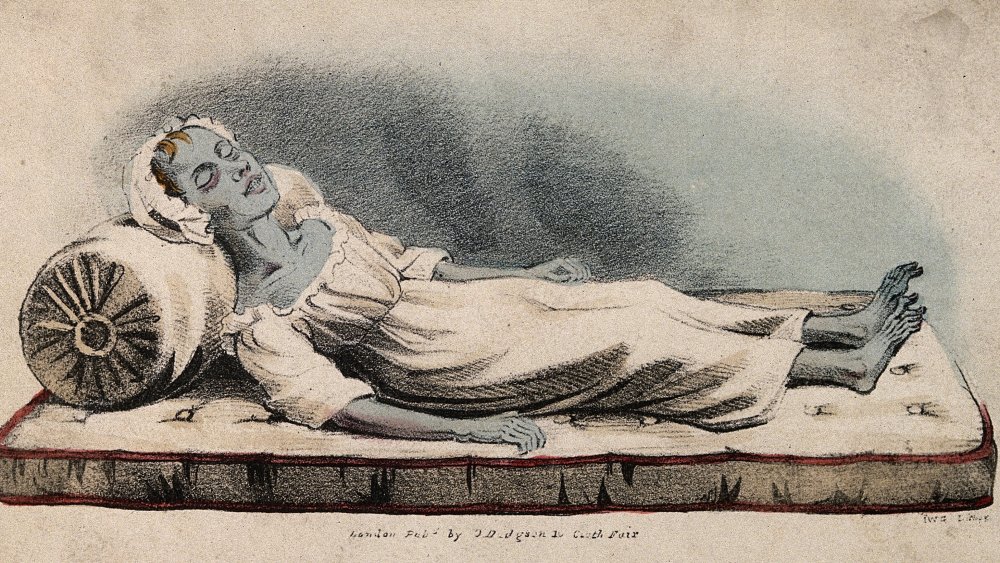
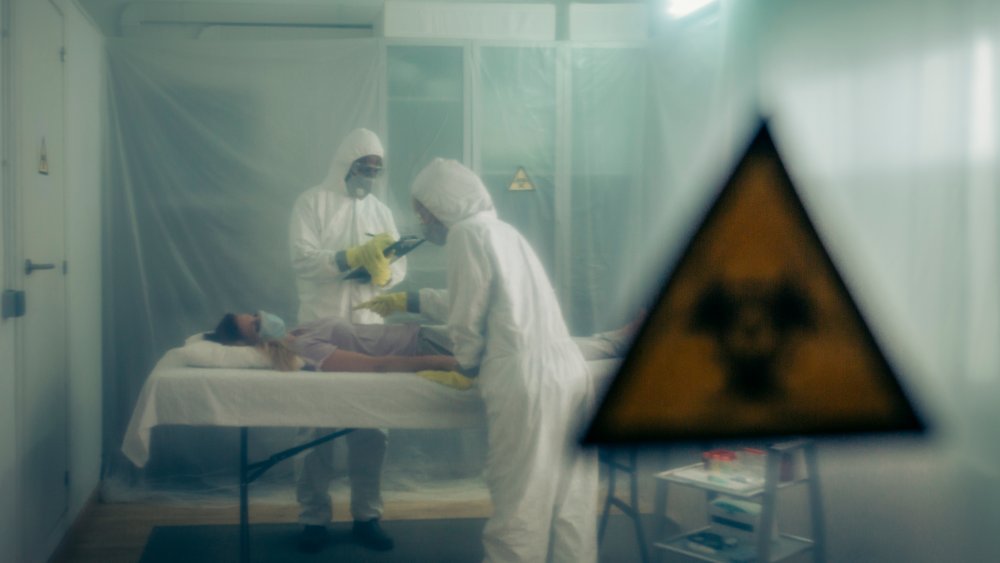

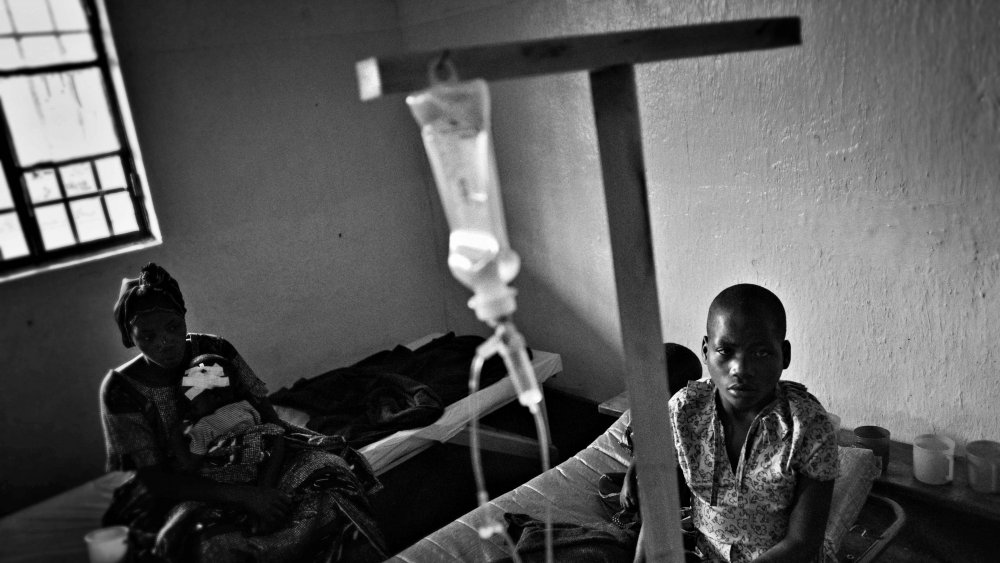

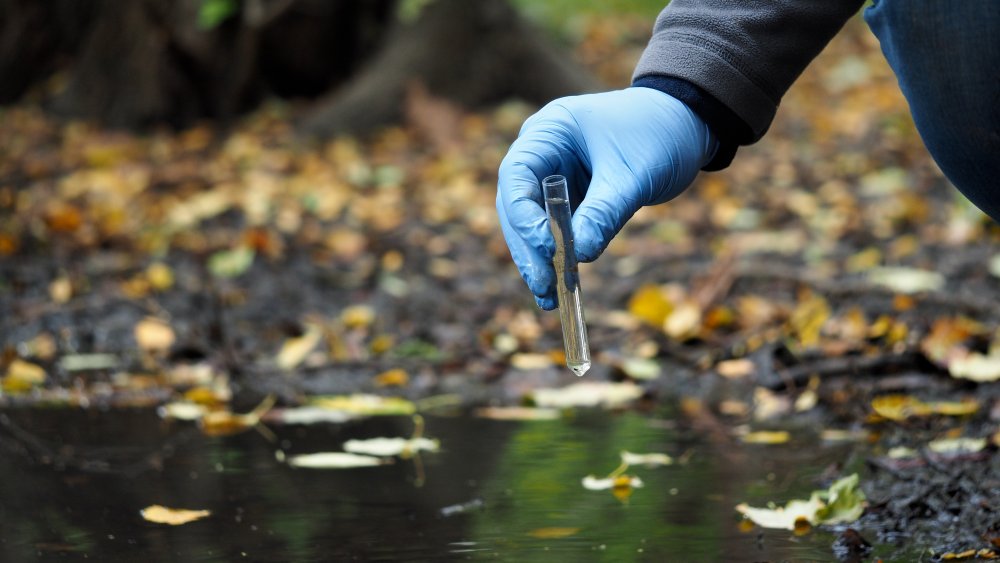
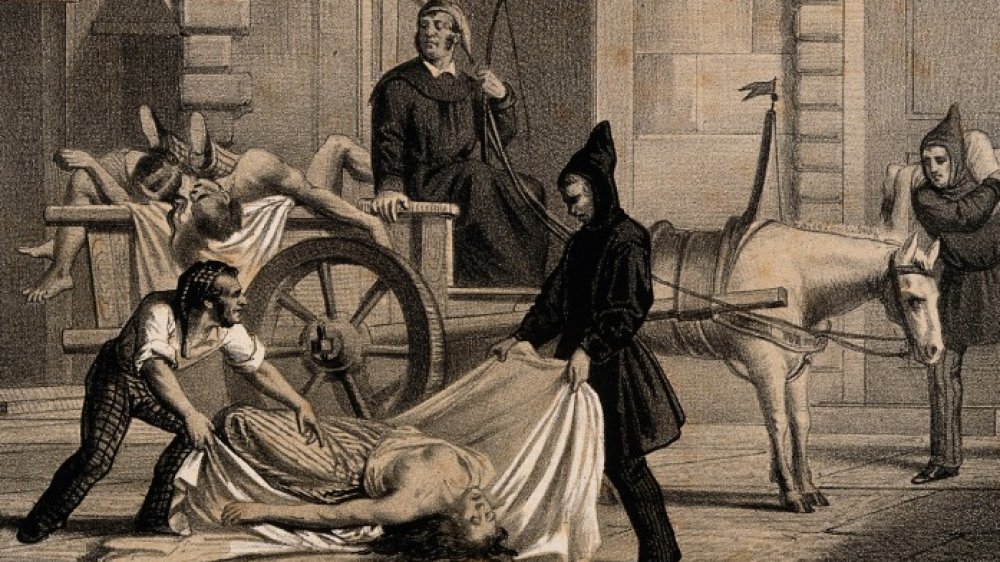
![A cholera patient experimenting with remedies. Coloured etching by R.I. Cruikshank, [1832?].](https://www.grunge.com/img/gallery/the-messed-up-history-of-cholera/bizarre-early-treatments-for-cholera-1601323670.jpg)
